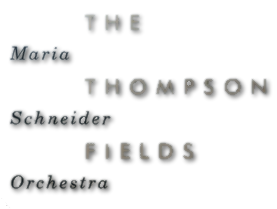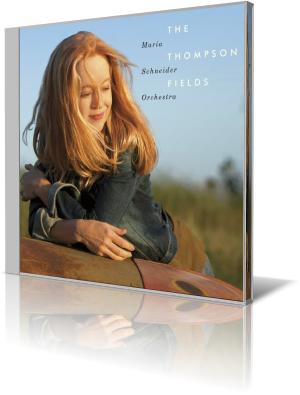|
If you take a jazz big band and ease back off the throttle, then have a
symphony orchestra that plays modern music, combine the two, you might
get an idea of the Maria Schneider Orchestra. Schneider’s The
Thompson Fields (2015) is the first recording she’s done with this
ensemble in eight years.
A Grammy-winning composer, Schnieder has worked with many of the musicians for more than 25 years. With Schneider as conductor, the musicians are Steve Wilson, alto and soprano saxophones, clarinet, flute and alto flute; Dave Pietro, alto and soprano saxophones, clarinet, flute, alto flute, bass flute and piccolo; Rich Perry, tenor sax; Donny McCaslin, tenor sax, clarinet and flute; Scott Robinson, baritone sax, bass clarinet, alto clarinet and clarinet; the quartet of Tony Kadleck, Greg Gisbert, Augie Haas and Mike Rodriguez, trumpets and flugelhorns; Keith O’Quinn, Ryan Keberle and Marshall Gilkes, trombones; George Flynn, bass trombone; Gary Versace, accordion; Lage Lund, guitar; Frank Kimbrough, piano; Jay Anderson, bass; Clarence Penn, drums; and Rogerio Boccato, percussion on “Lembranca.” “The Monarch and the Milkweed” was inspired both by the monarch butterfly and the scenic beauty of the prairie in Minnesota. The track features solos by Gilkes and Gisbert. It’s a tranquil, majestic piece. At just shy of 14 minutes, “Arbiters of Evolution” is the longest selection. It begins in a bouncy, strutting fashion with a blend of soft and throaty horns. Each section seems to be in its own zone, yet they all fit together. Inspired by Schneider’s love of birds, the title refers to the mating rituals of the birds-of-paradise species that are native to New Guinea. Solists are McCaslin and Robinson. Each can be described as taking flight, rising, tumbling, free-wheeling in the sky. The former is accented nicely by cymbal splashes and the underscore by the rest of the orchestra. The latter is more isolated. Schneider could be considered a pioneer in crowd-funding, having worked through ArtistShare for more than a decade. Several of the tracks are funded by fans through the ground-breaking company. The Thompson Fields includes a booklet that tells the story behind each song. The title is inspired by a family farm in Schneider’s homeland. The album photographs were taken in August 2014 at or near Thompson farms. Schneider composed all tracks.
|


